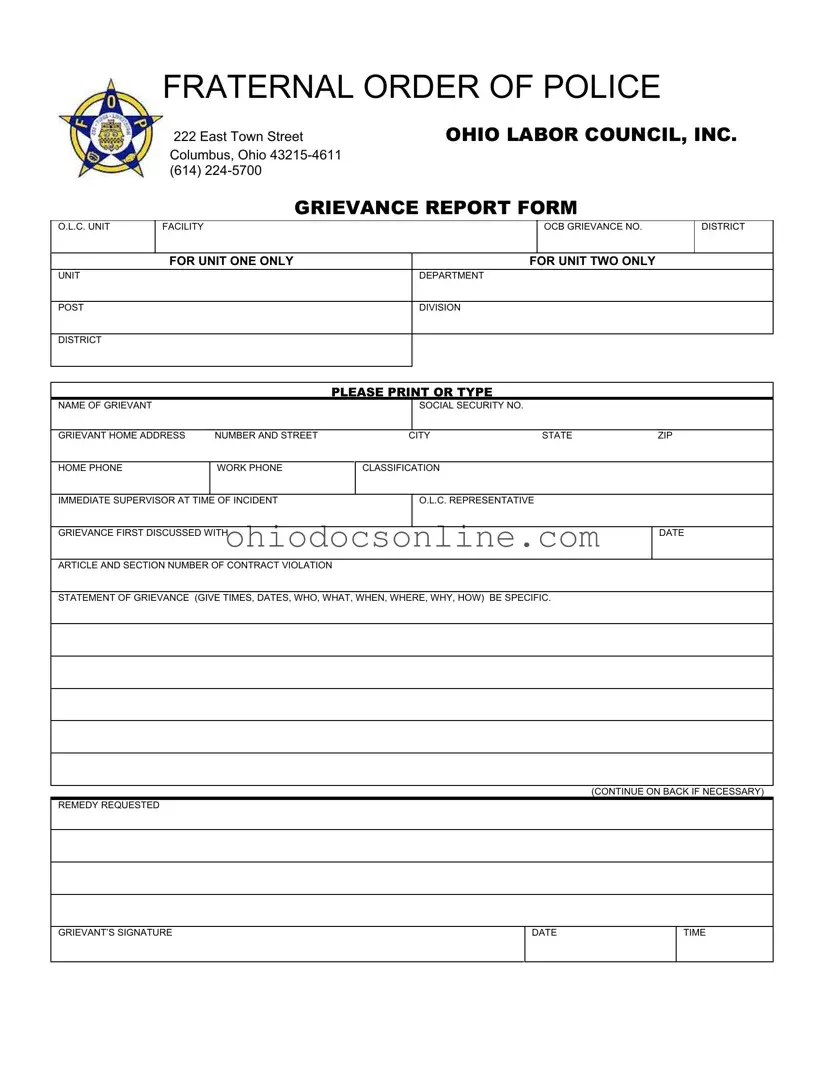Ohio Fraternal Order Of Police Template in PDF
The Ohio Fraternal Order of Police Grievance Report Form serves as a structured tool for members to formally report grievances related to labor issues. This form is essential for documenting specific incidents and seeking resolution through the appropriate channels. By providing clear details, grievants can facilitate a more efficient review and response process.
Open Editor
